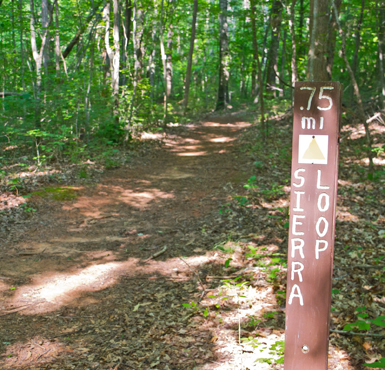Reedy Creek Nature Preserve – the largest nature preserve encircled by Charlotte – just got bigger. Mecklenburg County and the City of Charlotte pooled resources this fall to buy 97 acres of crucial Reedy Creek watershed on the eastern edge of the preserve near Hood Road.
The city and county paid $1.8 million for the tract. With the new land, the nature preserve and its adjoining city park now cover about 970 acres between Rocky River Road and Plaza Road Extension. Only two preserves are bigger – Latta Plantation and McDowell, both located on the Catawba River in western Mecklenburg County.
The park and nature preserve lie about 3 miles south of UNC Charlotte. The entrance on Rocky River Road, about a mile east of Harris Boulevard, leads directly into the 146-acre active park. The park offers several sports fields including a heavily used cricket field; numerous picnic shelters; a large dog park; a disc-golf course and a large fishing pond.
Reedy Creek Nature Preserve surrounds the active park and covers more than 820 acres. Though mostly forested now, the preserve contains remnants of old farms and even the ruins of a late-18th century rock house near Reedy Creek.
Forested playground
The preserve’s focal point, Reedy Creek Nature Center, features wildlife displays and hosts many programs for all ages. Ten miles of hiking trails lead deep into the forest. A unique woodland playground next to the center has natural play elements and even musical instruments made from wood.
The recent parkland addition serves a dual purpose – helping to set aside valuable parkland for our growing city while protecting our rapidly urbanizing watershed from erosion and pollution.
In 2014, Charlotte‐Mecklenburg Storm Water Services and Mecklenburg County Park and Recreation launched Charlotte’s largest single stream restoration project ever. The Reedy Creek Restoration Project will restore and preserve approximately 7.5 miles of streams and 5 acres of wetlands within, and just outside of, the Reedy Creek Nature Preserve.
Stream restoration to protect water, wildlife
Local creek flood plains can absorb pollution and storm-water runoff, but many of our streams, including Reedy Creek, were dug out by farmers in the early 1900s as a way to expand cropland and grazing areas. As a result, Reedy Creek’s bed and banks are rapidly eroding. That in turn makes the stream channel very deep and disturbs the areas where fish and aquatic insects live and eat.
Stream bank erosion results in fine sediments like clay in the water, which is bad for water quality. Erosion also exposes tree roots, which causes trees to fall over into the stream.
Beginning in 2016, stream restoration specialist Wildlands Engineering, Inc. will design improvements to the Reedy Creek stream habitat. North State Environments, a construction contractor, will build the improvements.
- Learn more about Reedy Creek Nature Center and Preserve
- Learn more about the Reedy Creek Stream Restoration Project


0 Comments